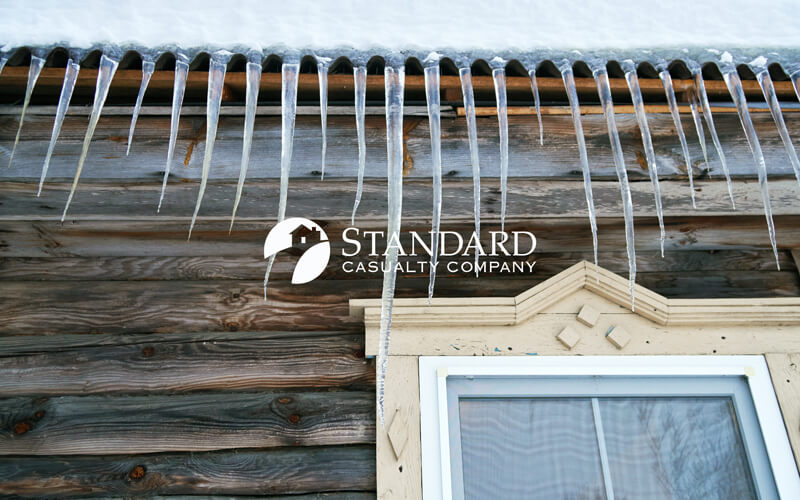


Unlike a Hurricane or Hail Storm, Freezing Events are often times quite and peaceful, creating a false sense of security. We've compiled a list of our Top 10 ways you can protect your home during Freezing Temperatures.
Spigots are directly exposed to freezing temps. They are often times the first thing to ice up on a house. Protecting them from icing up and potentially causing a burst pipe is easy and cheap. Check with you local hardware store for Insulated Outdoor Faucet/Spigot Covers. They typically cost around $4-$10 and can save you thousands of dollars in damage and repairs.
You can wrap your exposed pipes with insulation pipe wraps from your local hardware store, and you can even use old towels around your house and wrap with duct tape! Read More Here!
This is more for indoor plumbing pipes that run through your exterior walls.
Check the outside of your home for small cracks or openings. Even small holes where cables enter your home can allow cold air inside. You can purchase a can of spray foam insulation to close these up quickly. Also, weather stripping and caulking around all your doors and windows. This should be done yearly around your home.
If any of your plumbing is near an exterior wall you should drip your lines whenever temperatures dip well below freezing. You may also consider leaving your cabinet doors open and the pipes inside will be warmed by your room air.
If your waterlines do burst you will need to shut off the homes water supply immediately. If you have anything in the way of getting to this valve, we recommend clearing this for easy and quick access. This is normally a job for a professional plumber, but can save your home and property from further damage.
If your garage is attached to your home keeping the door closed will help keep cold air out and can protect plumbing fixtures in your garage.
Having full gutters can increase your chance of having ice form on your roof. This is not something that you want. We recommend setting aside time to clean your gutters out before freezing temperatures arrive. Gutter screens and or helmets can prevent leaves from clogging them.
Making sure you can keep your thermostat running continuously by keeping spare batteries on hand, even the new Nest system can help you monitor the temperatures on your cell phone.
When you leave your home for an extended period of time during the winder consider shutting off your water at the water meter and draining your plumbing system. This will help you not to worry as much about freezing pipes or other plumbing failures.
You should always contact your homeowner’s insurer to make sure your insurance policy is up to date and has good coverage for losses caused by freezing temperatures.
We exist to provide DIY and Lifestyle content that is targeted towards Budget-Minded Homeowners. We hope to teach and inspire our readers and ultimately, enrich their lives.